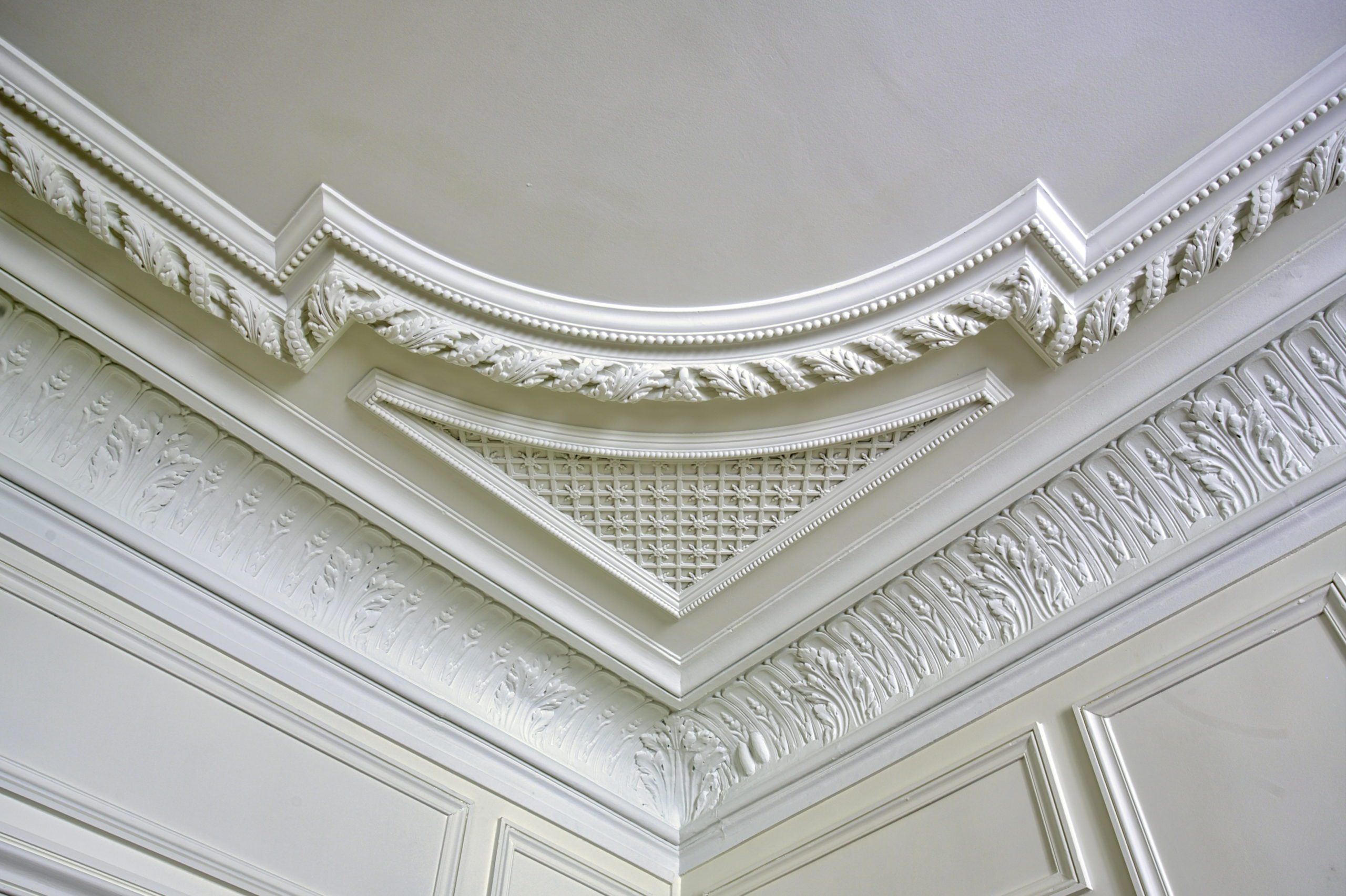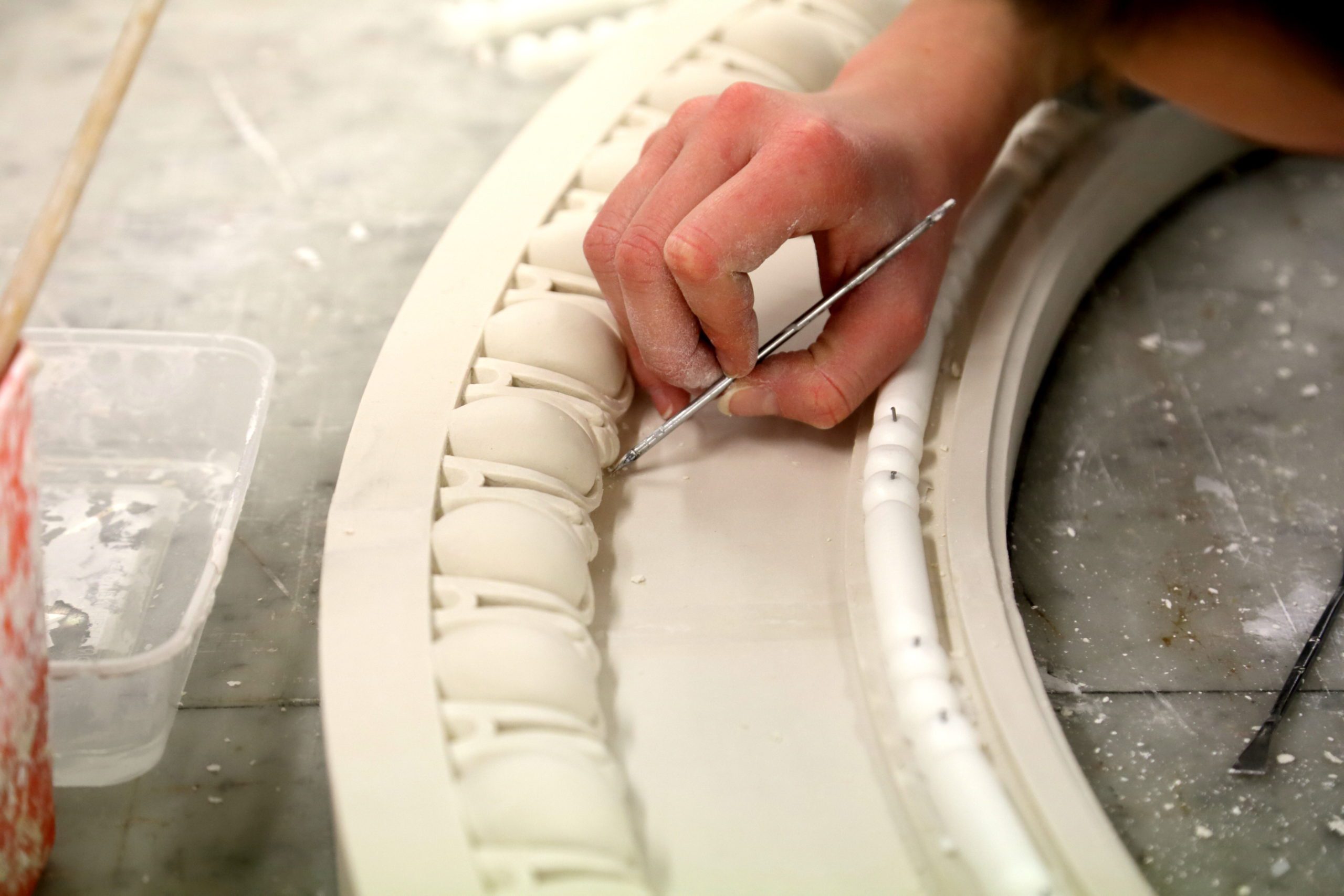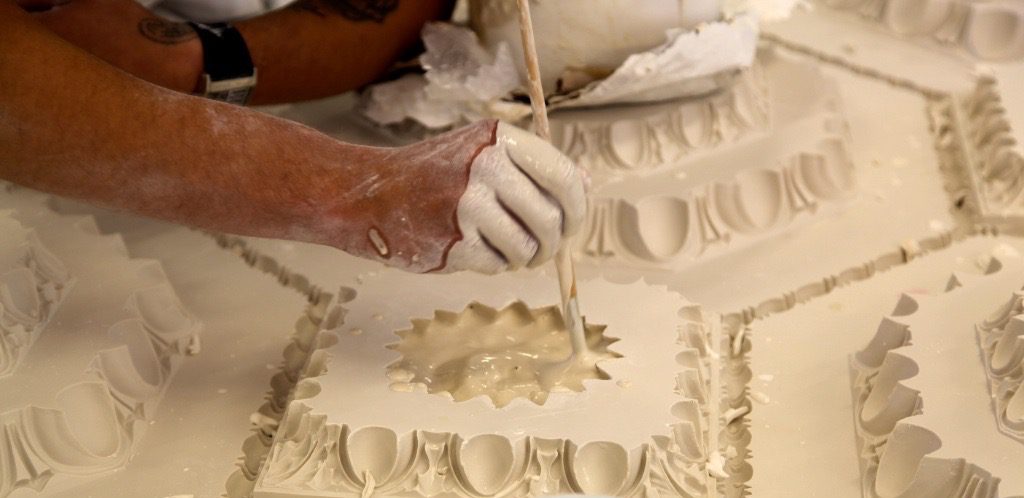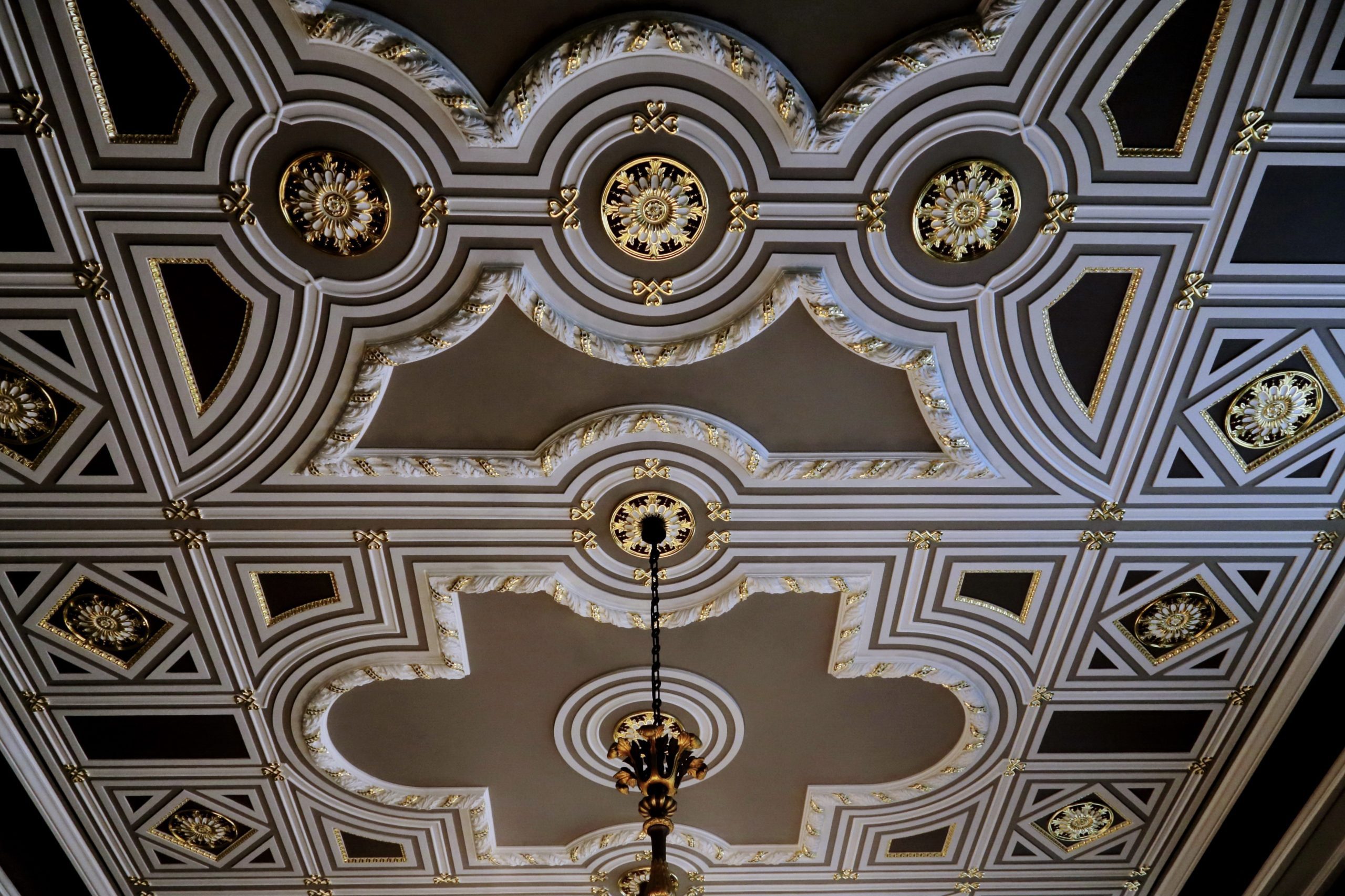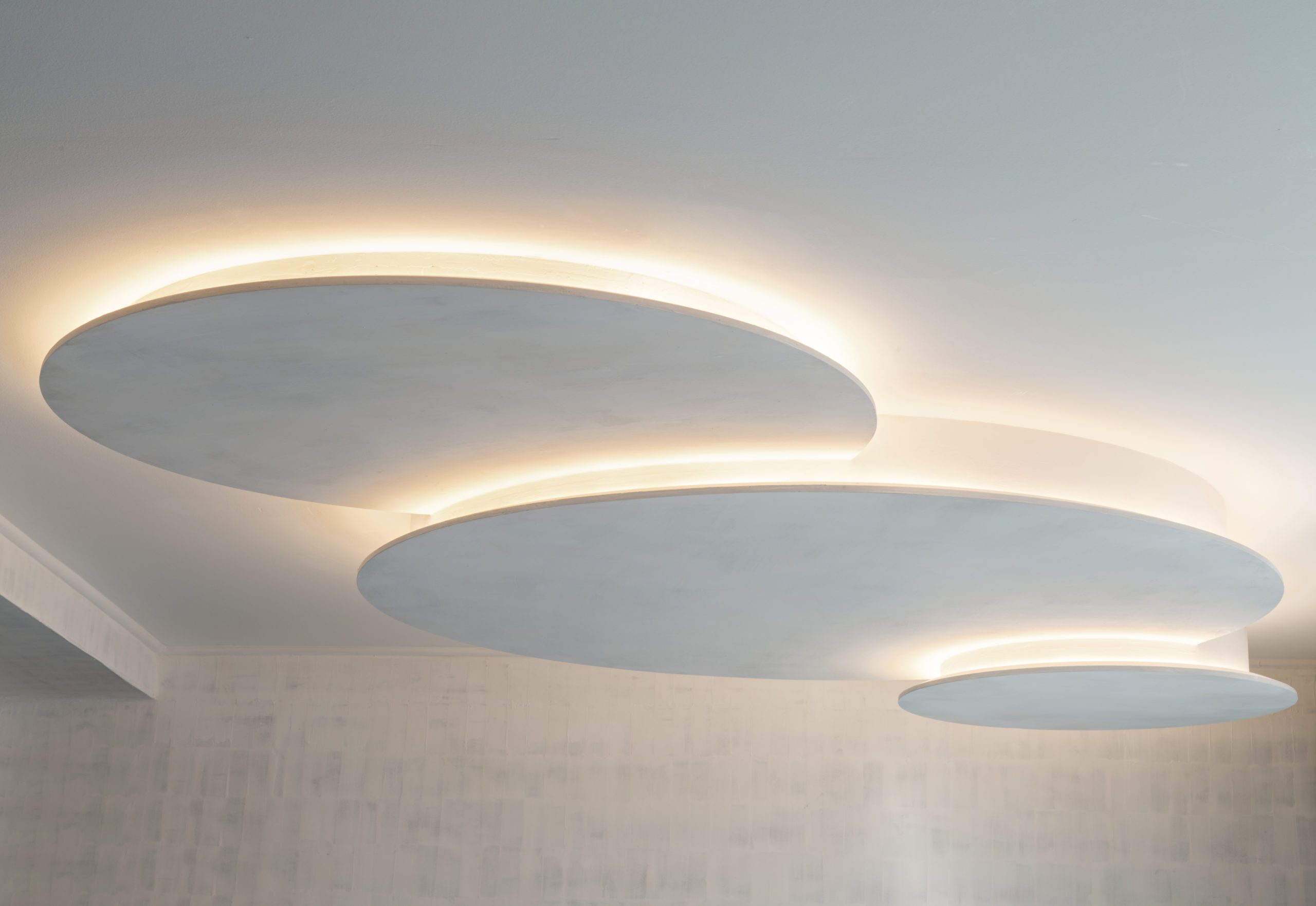Our new artisan Auberlet et Laurent - Interview with Thierry Lebufnoir
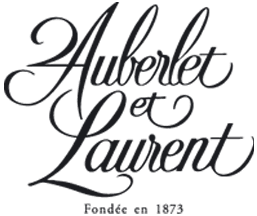
Par Excellence is very pleased to announce that Auberlet et Laurent have joined our collective of French artisans. Founded in 1873, this exceptional workshop creates plaster and resin ornamental decorative work highlighting all the design styles of Louis XV through Art Déco, as well as modern and minimalist styles. They have worked on exquisite projects from French châteaux to palaces in the Middle East and for the first time will bring their know-how to American projects. Their expertise and skilful technique in bespoke restoration, reproduction and manufacture of fibrous plasterwork has made them a renowned leader in their field.
Thierry, you took over as the head of the family business in 1998. Can you explain to us how your father transmitted the art of ornamental plasterwork to you and how you managed to immerse yourself in the Second Empire style?
I had the chance to work with my father who had a great deal of knowledge of styles. I immediately asked myself a lot of questions about styles and architecture and did a lot of research on my own to learn by myself. When you face clients who ask you questions and you don’t know how to answer them, the only way to solve that is to research and learn through books, which I think is very important. Your eye gets sensitized to all this and your intelligence too, so you can sort it out afterwards. I was also lucky enough to work with architects and decorators who had a lot of knowledge. As the work progresses, and through repetition, that’s how you learn by facing certain architectural and decorative problems. It’s true that I was immediately surrounded by competent professionals, and my father helped me a lot in this learning process.
As for the Second Empire, the Napoleon III period is very important for decorative plasterwork. So, you really have to open your eyes, that’s what I always tell the people I work with, you have to look at the facades and the interiors to immerse yourself in this style and understand its subtleties.
How did you manage to take Auberlet et Laurent forward, while keeping what made your company’s reputation?
There was a period for Auberlet et Laurent when we did a lot of construction, which was before my father joined the company. Then he took over and developed the catalog, launching sales of our products.
The turn I took when I arrived was to take over and develop these construction sites, which turned out to be very important because it allowed me to win over a large number of decorators and architects, which enabled us to grow. For me, it was important to work on these sites because we are really in the thick of things, we understand in a much better way the relationships with proportions, volumes, etc., and so we can see the outcome of the project, which you don’t necessarily get when you focus only on a specific design element. The challenge was to develop the installation process while maintaining the company’s reputation in terms of manufacturing and quality of work.
Ornamental plaster in the making at the workshop
You train a lot of apprentices. How are you preparing the succession that is taking place, both in terms of family and apprenticeship regarding your heritage?
Historically, Auberlet et Laurent has always trained journeymen and decorative plasterers. Many of them owe their professional life to my father who trained them. He himself was an apprentice at Auberlet et Laurent when he studied Applied Arts. So, it was a path that Auberlet et Laurent took because training is essential, even more so today than before. The continuity and the longevity of the company is passed through our training because in all sectors, including ours, there is a shortage of manpower.
We have thus taken the step to train people internally because we are not satisfied with external training, neither in quality nor quantity of students. As a result, the company’s longevity depends on training, and so during Covid, with my son Thibaut, we set up our own training center. We also always have immersion periods so that people can get hands-on experience.
How do you work with decorators and architects in general?
I have been lucky enough to work with decorators with whom I have a very good rapport, while always remaining professional. Above all, it’s about relationships, and as a result the decorators and architects are very loyal.
Before, we were good executors and people trusted us because we brought a lot as professionals, but now we are more specialists, we have a real advisory role and therefore the same relationship is no longer there. Today we accompany more than we execute.
Your design office offers 3D modeling of projects for your clients. How have you managed to combine new technologies with traditional know-how?
We’ve always had a design office, ever since my father took over, because we were doing things that others weren’t doing. Before, we were more of a drawing office, we would draw up what our customers wanted, but now we have to be a constant source of ideas, which I really like.
We create 3D plans, perspectives, technical plans, table networks, cornices, ceilings, etc., but it remains a learning curve. Digital and 3D printers allow you to create sculptures, but even in the future, nothing will be done without working by hand. The quality of the rendering is still not the same as something made by hand.
What do you think about the future of handmade craftwork when our future is becoming more and more machine-made?
I think the mechanized world has been around for a while, the Industrial Revolution having played a big role. However, today we see that people are looking for French know-how and that quality of French handwork. I can tell you that I have many foreign clients who want to rediscover French art, and what it represents. For example, we are currently working on a project in Jeddah, where all the Arabic decorations have been entrusted to us because our client wants to rediscover the spirit and the French quality that comes from this French know-how. For our profession, I am not very worried, even if, once again, I think that we must take the turn of the modern world and become more digital. I am really convinced that there will always be a real need for things made by hand.
How do you differentiate yourself from other specialists in this niche field?
“At Auberlet et Laurent, we focus on quality work and that is our reputation.” — Thierry Lebufnoir
Our clients trust us and understand why our services may be more expensive. It starts with having ideas that others don’t have.
Above all, we are very conscientious and pay attention to details. I also always insist on proportion because we still see too many things that are not harmonious and lack character. I believe that there is a good deal of confidence in knowledge.
We also distinguish ourselves through our catalog. We specialize in two areas of activity: construction sites, with installations; and manufacturing, with catalog and custom references.
You have won over the international market by forging a real reputation. How did you launch your company abroad?
The multilingual adaptation of our website has played an important role in acquiring new customers: it has been developed in English, Chinese, Russian, etc. I remember an Australian customer who ordered plasterwork from us via our website.
Word of mouth also works quite well. Today, we are still known in the world of consultants and demanding clients. They surround themselves with architects and decorators who know us.
What are the major challenges you have had to face, especially with this kind of international projects?
Every day brings a new challenge. When I propose the sketches, you have to get the client to say “this is what I want”. Then, the challenge is to go from the 3D drawing to the real world and especially that the final rendering pleases the client. When I work on a project, my goal is that at the end, the client says “Mr. Lebufnoir, what you did is fantastic!”
There are all sorts of other challenges, such as not being able to travel to the construction sites and creating everything remotely. What is really complicated is to physically transcribe something that you have in your head. For example, we worked on a castle, where we were in charge of creating a library in a room. The client wanted this library to be in the spirit of the one in the castle of Chantilly, but its proportions were all wrong. We started with a pencil sketch, then we moved on to the sculpture stage, and finally to the realization. Our client found the final rendering beautiful, and that’s the daily challenge at Auberlet et Laurent!
If you had to name only one, which project inspired you the most over your career?
Encounters are essential in life, and I met someone who made me evolve in a considerable way, especially concerning ornamentation and artistic aspects. So, if I had to choose only one work site, it would perhaps be the site we realized with this person who was himself an artist. I was lucky enough to meet this man, and there was a strong bond, a real sense of being in it together. We never talk about it enough, but we meet a lot of nice people.
Catalog references
We are so happy that you have joined Par Excellence. What are your thoughts on being part of this French design collective and what does it mean to Auberlet et Laurent?
I feel that there is a real dynamic and a good friendly relationship. I think we can go a long way together. I feel very good about it, and I hope we will have the chance to realize many projects together. We haven’t always been able to do what we wanted to do because we didn’t have the logistics or the infrastructure, which is why we are starting this adventure with Par Excellence today, to support us and give us what we need to access this market full of opportunities.

